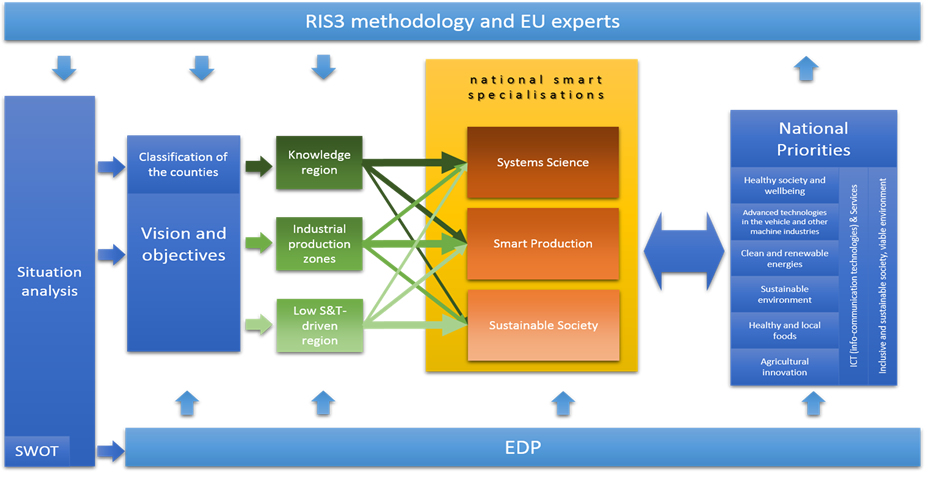The Government of Hungary adopted the National Smart Specialisation Strategy in November 2014 with Government Decision 1640/2014. (XI. 14.). The elaboration of the smart specialisation strategy was an ex-ante condition of receiving the EU funds allocated to research, development and innovation for the 2014–2020 period amounting to HUF 693 billion, and is also an RDI policy instrument which serves as a point of reference for the implementation of the Investment in the future – National Research and Development and Innovation Strategy (2013–2020) adopted with Government Decision 1414/2013 (4 July) on the adoption of the National Research and Development and Innovation Strategy (2013–2020) by providing an overall picture of characteristics and sectoral and technological priorities of territories (counties). This way, although it is called a strategy, the S3 document completes the RDI Strategy and is to be interpreted and implemented together with it.
 |
| Figure 1: The intervention logic of the National Smart Specialisation Strategy (S3) |
Source: National Smart Specialisation Strategy, 2014
The S3 is a new type of monitoring instrument for counties and the RDI policy which enables them to support research, development and innovation processes and the principle of regionality more effectively: it is a practical means for making strong areas in a given region or county more visible for RDI stakeholders. The methodology of the S3 lays great emphasis on the continuous assessment and analysis of and the provision of feedback to regional implementation and economic and social changes with the involvement of a wide range of stakeholders.
Based on the S3 triple subdivision adopted in 2014 the following main specialisation directions are identified:
- National Specialisation and Types of Regions: 3 national specialisations and 3 types of regions
- National (Sectoral) Priorities: 6 sectoral priorities and 2 horizontal priorities
- Smart technologies: 13 smart technologies
The National Smart Specialisation Strategy can be downloaded here: National Smart Specialisation Strategy (S3)






